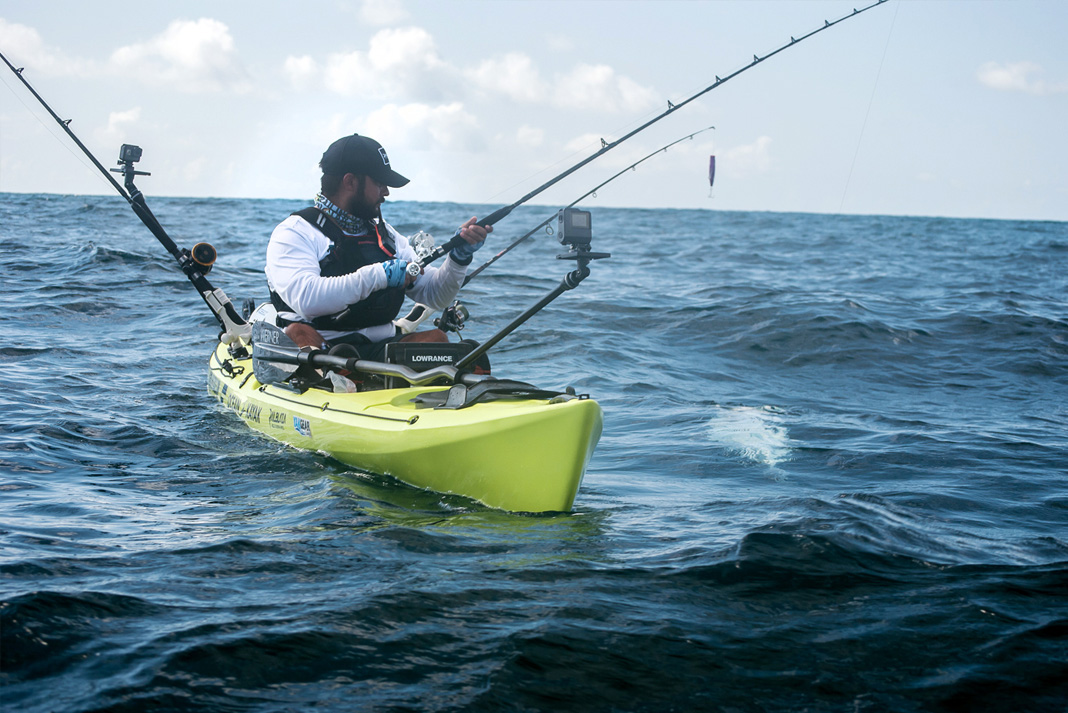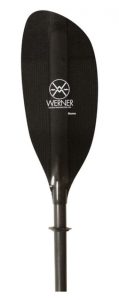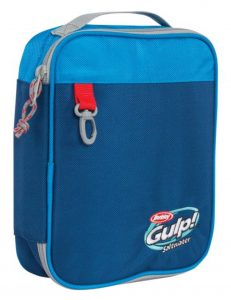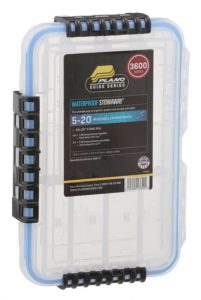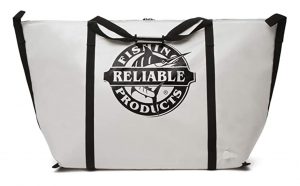Products You May Like
Chris Castro fishes the wild waters off Corpus Christi, Texas for king mackerel, cobia, jacks and other sea monsters. A typical day starts with a surf launch, includes miles of paddling and ends with reentry through the surf. Fishing open water in a paddle kayak requires stamina and smarts, but also the right rigging.
Ultimate Rigging Guide for Fishing Open Water
In the last two years, Castro has competed in motorboat tournaments and won. His ability to launch the kayak close to the best fishing grounds gives Castro an advantage over the boaters, who have to run miles from the nearest inlet. The scale of Castro’s trips requires him to carry a variety of gear and tackle. If he’s lucky, he’ll fill a fish bag with his catch. Here’s how he does it.
Offshore Kayak
“An ideal offshore kayak is designed to carve through the water,” Castro starts. To cleave the waves and cheat the wind, Castro uses an Ocean Kayak Trident 15. The 15-foot-long kayak has a narrow 28.5-inch waistline and hefty 455-pound capacity. Castro says the boat cuts through the water and carries tons of stuff.
Another important quality of an offshore boat is a defined rocker and loose primary stability. Rocker is the slight rise in the keel that allows the paddler to lean back and slightly lift the bow to improve turning performance. A rounder chine allows the boat to rock in the waves. Sporty handling is most important on surf reentry to prevent the bow from digging into the water and flipping the kayak.
The big boat does benefit from a rudder, which allows Castro to steer the Trident 15 with his feet. Recently, he’s been experimenting with a Bixpy motor that attaches to his rudder mount. The motor increases Castro’s range without significantly affecting his ability to cross the surf line.
To increase stability and reduce wind resistance, the Trident 15 has a low-profile seat. This is also an advantage in the event of a surf wipe out as the seat is less likely to be damaged or injure the paddler.
An open water boat should also be able to carry rods and gear below deck when the water gets rough. Castro likes the Trident 15’s large center, bow and stern hatches. “I can carry rods and fish inside the hull,” he marvels.
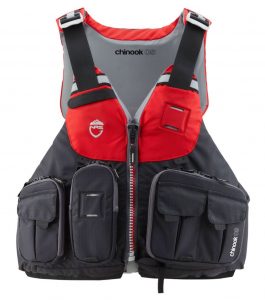 Life Vest
Life Vest
Castro looks for a life vest that allows him to carry all of his safety gear. “The NRS Chinook OS favors offshore anglers,” he says. With three accessory pockets, reflective accents, lash tab and strobe attachment, Castro can pack his whistle, strobe light, personal locator beacon and VHF. “One of my favorite features is the VHF pocket,” he says. Carrying his handheld radio on his life vest gives Castro an added level of security. “It’s my last resort communication device,” he says.

Performance Paddle
For nimble performance, Castro prefers a paddle kayak. “I’d rather sacrifice hands-free fishing for better control in the surf,” he says.
Flippers or propellers below the water line prevent a pedal boat from surfing. “There’s no way I can broach brace on a big wave,” he says, explaining how he uses his paddle blade to steady his kayak when the boat turns sideways in the surf.
Castro stresses blade shape and shaft style will be different for each angler. “Consider torso height, kayak width, seat height and paddling style,” he says. After years of paddling, Castro chooses a Werner Shuna Bent Shaft carbon fiber paddle. He explains, “The bent shaft reduces fatigue on my hands and shoulders.” He likes the high-angle blade for power strokes with a heavy kayak.
Tackle Boxes
“I’ve learned that simpler is safer,” Castro says. Keeping his lures and rigs stored securely prevents injury and property loss in case of a wipeout in the surf. Castro organizes stinger rigs in a Berkley Gulp! Saltwater Bait Binder.
Spoons, jigs and big plugs are stored in a Plano Guide Series 3600 Waterproof Stowaway. “Both systems are waterproof,” he adds.
Fish Storage
Castro relies on a 48-inch Reliable Jumbo Kayak Fish Bag to keep his catch cold on hot Texas days. When the weather is cooler, he can store the fish inside the kayak. “When I’m harvesting fish, I leave the crate at home and bungee the bag into my tankwell,” he says.
As he prepares to enter the surf, he’ll move the fish inside his kayak. The bag, stuffed with ice, also stores Castro’s trolling baits.
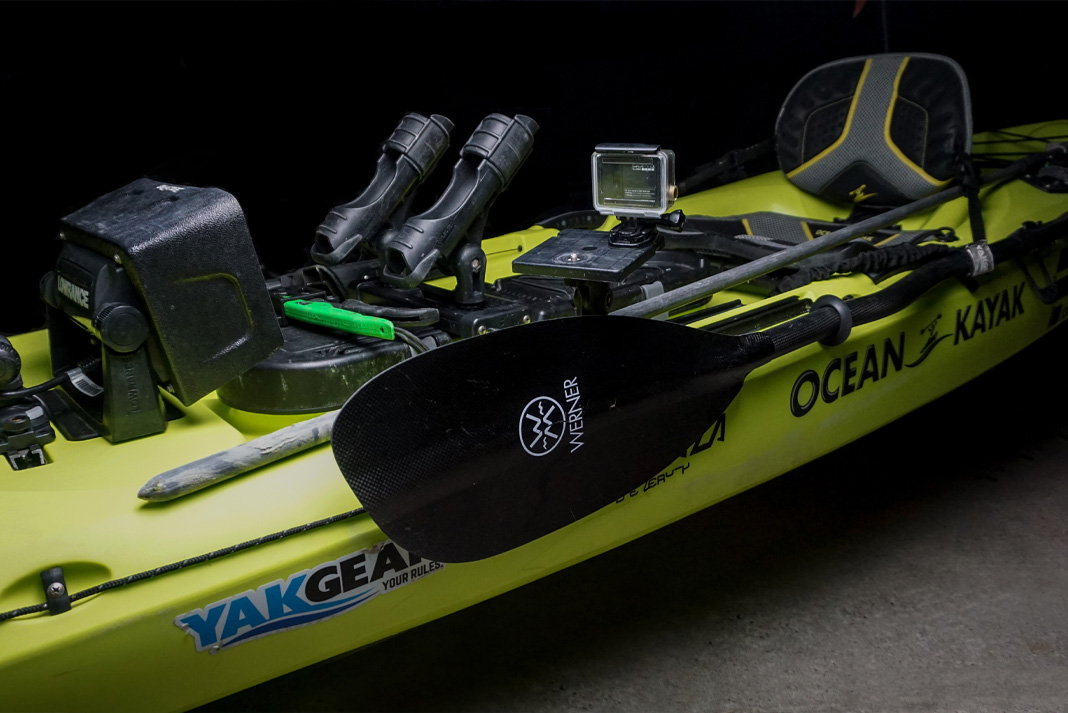
Nets, Gaffs and Grippers
To quickly land pelagic fish, Castro employs a Promar GFE-523 two-foot gaff with a three-inch bite. “If the fish is really naughty, I’ll stun it with a fish bat.” He stores both devices in his center hatch.
 Accessories
Accessories
Castro uses a 36-inch Baja paddle leash from YakGear. “The leash is wrapped in fabric to stand the test of time. I’ve never lost a paddle,” he says. Castro attaches the leash to a pad eye in the center of the deck.
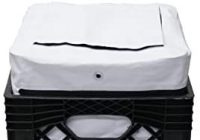
Storage Crate
“Kayak accessories that can perform multiple uses go a long way,” Castro says. He points to YakGear’s Cratewell/Livewell as an example. The traditional, milk crate-style storage system hosts five rod holders. Add the livewell insert, a vinyl bag fitting in the crate, and the Cratewell will carry live bait or keep gear protected from the elements.
“Rig for chaos. Stay organized but don’t fill
the kayak with junk that can get in the way.”
 Electronics
Electronics
A high-quality fish finder and GPS is an essential piece of rigging for open water fishing. Castro uses the Humminbird Helix 5 CHIRP SI G2 with split screen navigation and side-imaging sonar. “I can scan a structure and decide how I will approach it,” Castro says. The GPS is invaluable for locating structure, monitoring speed and direction, tracking wind and current and safely navigating back to the beach.
Castro installs his fish finder display on a Railblaza Fish Finder Mount R-Lock base. “I can move the mounting bracket to any Railblaza StarPort.” He powers the unit with a YakGear 12-volt lithium battery. “The battery fits in the battery storage bag inside the front hatch of my Trident 15,” he says.
This article was first published in the Fall 2020 issue of Kayak Angler Magazine. Subscribe to Kayak Angler Magazine’s print and digital editions, or browse the archives.
Take it all and lose nothing with our rigging guide to fishing open water. | Feature photo: Chris Castro
